Smoke Coming From Art Materials Smoke Coming From Art
Articles & Features
Art Media: What Happens When Artists Experiment with Unusual Materials

Damien Hirst, The Physical Impossibility of Death in the Mind of Someone Living, 2170 x 5420 x 1800 mm, 1991.
Glass, painted steel, silicone, monofilament, shark and formaldehyde solution.
By Tori Campbell
Art Media
Fine art observers often focus their attention on the subject portrayed in artistic works — but frequently the art media used to create the works is simply every bit, if not more, important than the subject itself. Though nosotros usually call back of visual artists working in paints, inks, or clays; artists have too experimented with art media every bit strange and unconventional every bit bubblegum, elephant dung, and human blood. Take a wait with us at some of the more surprising materials artists have created with throughout fourth dimension.
Burnt Plastic

Inspired by Jean Dubuffet'due south utilise of dirt, sand, and organic materials; Italian artist Alberto Burri began to experiment with art while in a World State of war 2 prisoner-of-war camp in Texas. Thus, he worked with found materials similar burlap, coal tar, and oil to hone his artistic style. Though built-in out of necessity, this exercise became his signature style, and has culminated in his iconic serial Combustioni Plastica of meticulously burnt sheets of plastic. By using a flaming torch equally his paintbrush, and a sail of plastic as his canvas, Burri creates postmodern pieces that hang from the ceiling and inextricably comprise light and transparency into his media.
Meat
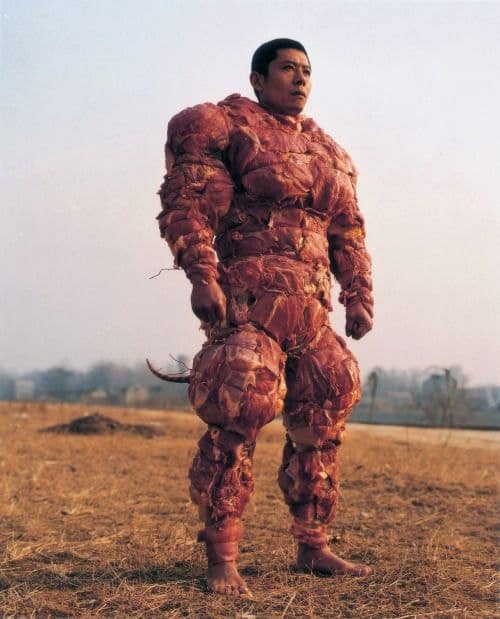
Meat equally art media crept into popular civilization in 2010 when Lady Gaga wore a dress of raw beef to the MTV Video Music Awards, just years prior performance artist Zhang Huan walked through the streets of New York City in a bulging meat suit. His piece, My New York, confronted his experience every bit an immigrant in the city, his relationship to Buddist tradition, and the animalism of man. Even further dorsum, Carole Schneemann, operation artist and influential thespian in the Judson Church building motion, choreographed and staged Meat Joy in 1964. The piece showed 8 men and women chaotically writhing upon the floor whilst bitter at raw chicken, fish, sausage, and scraps of meatpacking garbage. An instant stupor to her audition, Meat Joy explored the human relationship to the body and sexuality through raw flesh and allusions to erotic rites.
Smoke & Soot
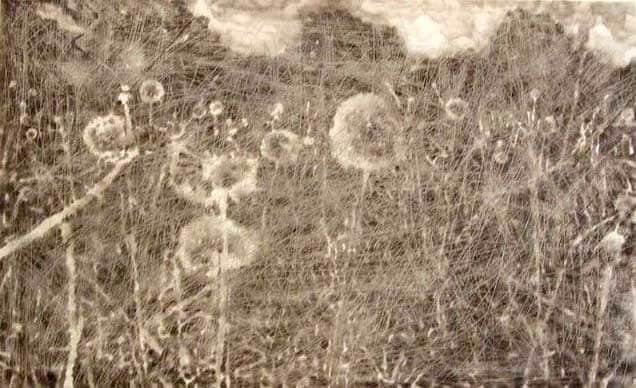
Soot on canvas, 80 x 130 cm
Czechoslovakian artist Jiri Georg Dokoupil has worked with a multiplicity of art media throughout his career, experimenting with materials such as milk and soap. Never ane to be pigeonholed into a singular way or media, Dokoupil has famously congenital upon the Surrealist do of fumage, utilising fume and soot in his art. Presented for the outset time in 1936 at the International Surrealist Exhibition in London surrealist creative person Wolfgang Paalen'south Dictated by a Candle was created using the fumes from a candle held near a canvas. Dokoupil's smoke and soot works are extensions of this surrealist technique, studied and expanded upon in pieces like his 2004 Pusteblumen, where he has masterfully 'painted' a garden scene with soot.
Expressionless Animals

Drinking glass, stainless steel, Perspex, acrylic pigment, lamb and formaldehyde solution
Somewhat of a celebrity in the art world; artist, collector, and entrepreneur Damien Hirst's well-nigh iconic pieces comprise dead animals as a primary art media. His 1991 piece The Physical Impossibility of Death in the Mind of Someone Living, commissioned past British art collector Charles Saatchi, employed a dead xiv-foot (iv.3m) tiger shark in a tank of formaldehyde to communicate the mission of his work. The series comprised of more, and other, expressionless animals in formaldehyde tanks, occasionally partially dissected; including sheep, cows, birds, and even a zebra. The works came under public scrutiny in 2016 when a study reported that high levels of formaldehyde fumes were leaking from his pieces throughout their 2012 exhibition at the Tate Modernistic. Though these claims are being contested, information technology is ane small example of the logistical and legal troubles artists tin can experience when utilising foreign or controversial art media.
Elephant Dung
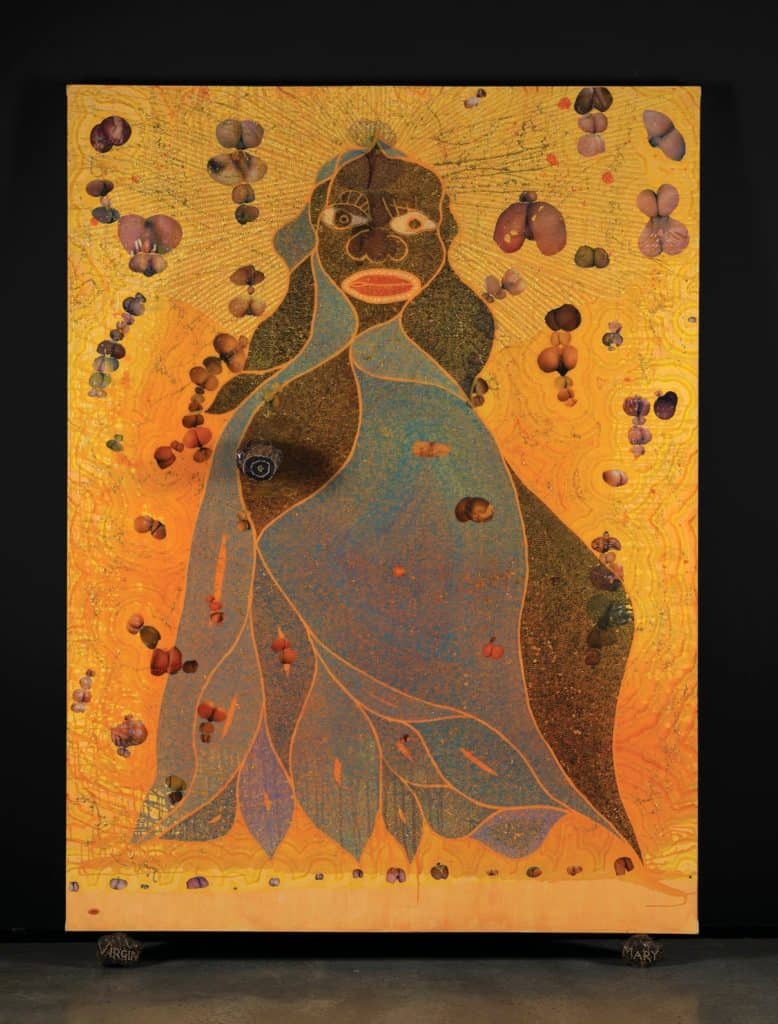
Acrylic, oil, polyester resin, paper collage, glitter, map pins, and elephant dung on canvas
Another creative person that is no stranger to the controversy surrounding their unorthodox pick of art media is Chris Ofili. Ofili is the artist behind the 1996 The Holy Virgin Mary, a massive 8-foot alpine piece of work created out of mixed fine art media including pornographic collage and elephant dung. To be crass the painting is quite literally 'made of shit' — or rather, elephant dung that Ofili brought back to London with him after a residency in Zimbabwe, assuasive the work to become emblematic of everything that conservative thinkers idea offensive about modern art. The piece of work travelled the world in the late 1990s as part of Charles Saatchi'south prove Sensation, and information technology deeply upset Catholics everywhere it went — to the extent that it was defaced with white paint by a man who deemed the piece of work 'blasphemous'. Famously, then-mayor of New York City, Rudy Giuliani, tried and failed to ban the work and strip the exhibiting Brooklyn Museum of its grant due to his aversion to the slice.
"There'southward nada in the First Subpoena that supports horrible and disgusting projects!"
Rudy Guiliani
Blood

Inspired by the realism and true-to-life nature of life casting, Marc Quinn uses the technique in a brand-new manner, employing blood as his chosen art media. In his sculptural Cocky series Quinn uses ten pints of his own blood to craft a self portrait that is both an image of him, and literally a part of him. Fatigued to the medium as blood is the essence of life, a cloth that has deep symbolic and truthful function, Quinn has also used creature blood and placenta to create his pieces. His upcoming work Our Claret, set to open up as public art on the steps of the New York Public Library in June 2021, comprises the blood of over ten,000 donations. Meant to illustrate the equalising power of claret, and that nosotros are all one as humanity, Quinn aims to raise money and awareness for the rights of refugees with this ambitious work. Larn more about Our Blood by watching the video below.
Our Blood: An Introduction
Pornographic Magazines
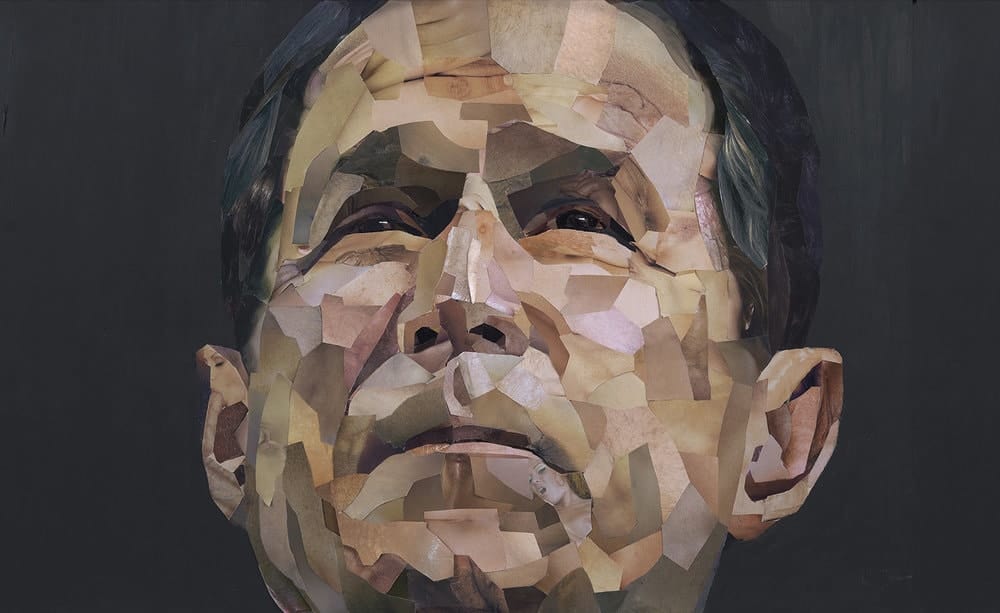
I of the leading figurative artists in the world, Jonathan Yeo creates his portraiture out of fine art media not typically seen in galleries and museums: pornographic magazines. Past meticulously collecting snippets of flesh and genitalia, Yeo crafts collaged portraiture that might seem perfectly normal from afar, but far from it upward close. Analogous his media with his subjects, his Bush piece is a perfect example of how his chosen art media can poke fun and provoke the people he depicts. Given onetime U.s. president George Bush's puritanical views about sexual activity and human sexuality, Yeo is able to shed low-cal on the hypocrisy of the political right with his piece of work.
Chewing Gum
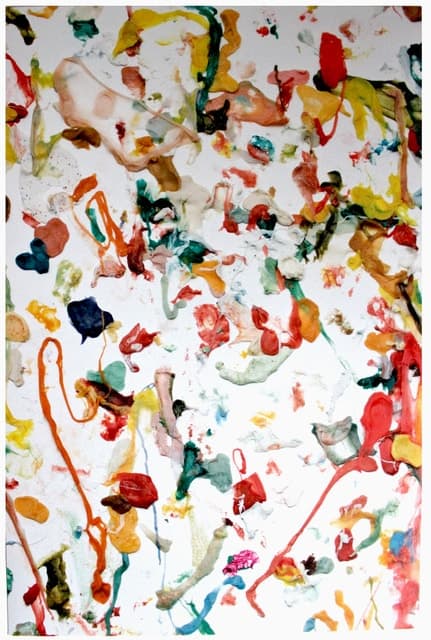
Bubblegum: emblematic of the babyhood fantasy-like wonder and enthusiastic playfulness of the creative person that has been known to apply the substance as fine art media. Dan Colen began to make 'paintings' out of chewing glue in 2006, ushering in an era of exploration around materials and medium equally opposed to his previous trend of representational subject matter. Primarily concerned with beingness guided past his fine art media instead of manipulating it himself Colen has mused upon this technique as a loss of command and an excitement with letting go, commenting that his paintings have taken on "inevitable forms — nearly like destined forms" equally if they have a life of their ain.
Chewing Gum Fine art with Dan Colen
Cassette Tapes
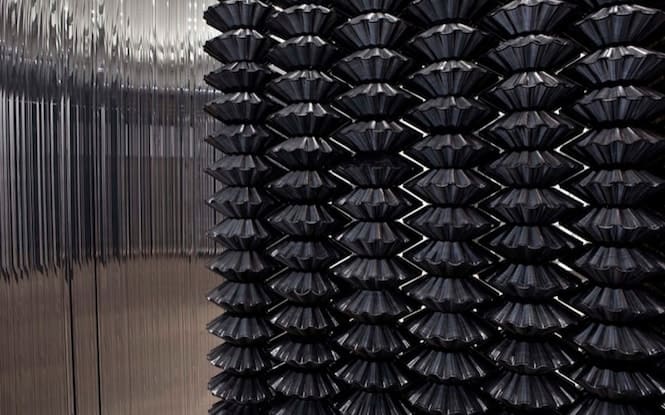
Enchanted by an issue in which he cut out and carried the record of a cassette around with him throughout the twenty-four hours, bringing a vocal physically in his pocket artist Gregor Hildebrandt has brought this inspiration into his creative oeuvre. Divers past art media surrounding musical artefacts like cassette tapes and vinyls; Hildebrandt's work literally incorporates songs, films, or poems within the visual fine art. Repurposing materials often found in garage sales and rubbage heaps, Hildebrandt purchases his art media from eBay in massive batches, displaying visually that which is recorded in audio — just similar the grooves of a vinyl record.
Lottery Tickets
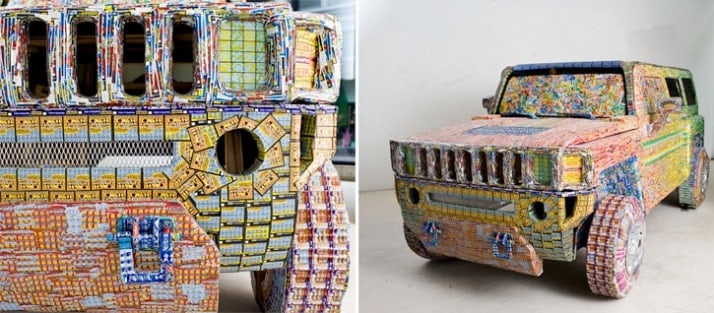
While walking their canis familiaris Banana, artists Lauren Was and Adam Eckstrom noticed discarded colourful bits of paper; lottery tickets. The poetic implications of dreams unfulfilled or hopes dashed that accompanied these thrown away tickets was non lost on the artists, and their inspiration to create the serial Ghost of a Dream was born. While collecting tons upon tons of the tickets, they besides conducted enquiry to find out what people buy when they win the lottery. They found that oftentimes, the first thing winners exercise is buy a auto. Thus, Was and Eckstrom ready out to create a total scale Hummer H3, the first piece of the dream trilogy that also included Dream Vacation and Dream Home, the height three things purchased with lottery winnings. Dream Car made of $39,000 worth of lottery tickets to represent the retail cost of the new motorcar in 2008, is a big-scale installation that ruminates on coin spent on dreams and the risky behaviours that accompany these goals.
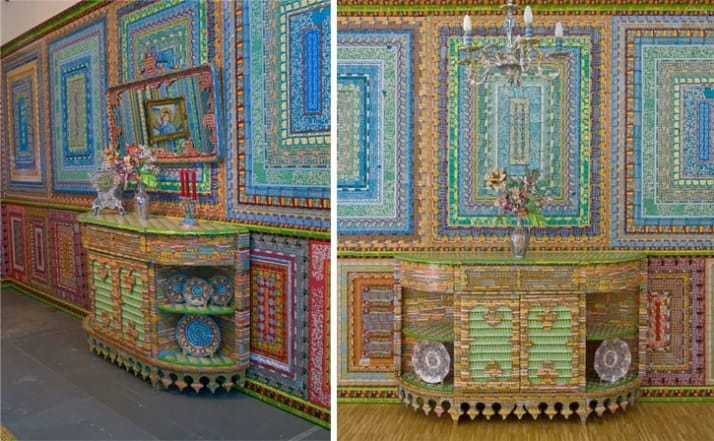
Courtesy of Davidson Contemporary, New York and Galerie Paris, Beijing
Relevant sources to acquire more
Learn from the Tate about what an art medium is
Read for yourself about the controversy surrounding Damien Hirst's formaldehyde
Have y'all learned about the medium of textile art? Take a expect at the work of our top ten favourite textile artists
mccallburnournswes.blogspot.com
Source: https://magazine.artland.com/art-media-what-happens-when-artists-experiment-with-unusual-materials/
Post a Comment for "Smoke Coming From Art Materials Smoke Coming From Art"